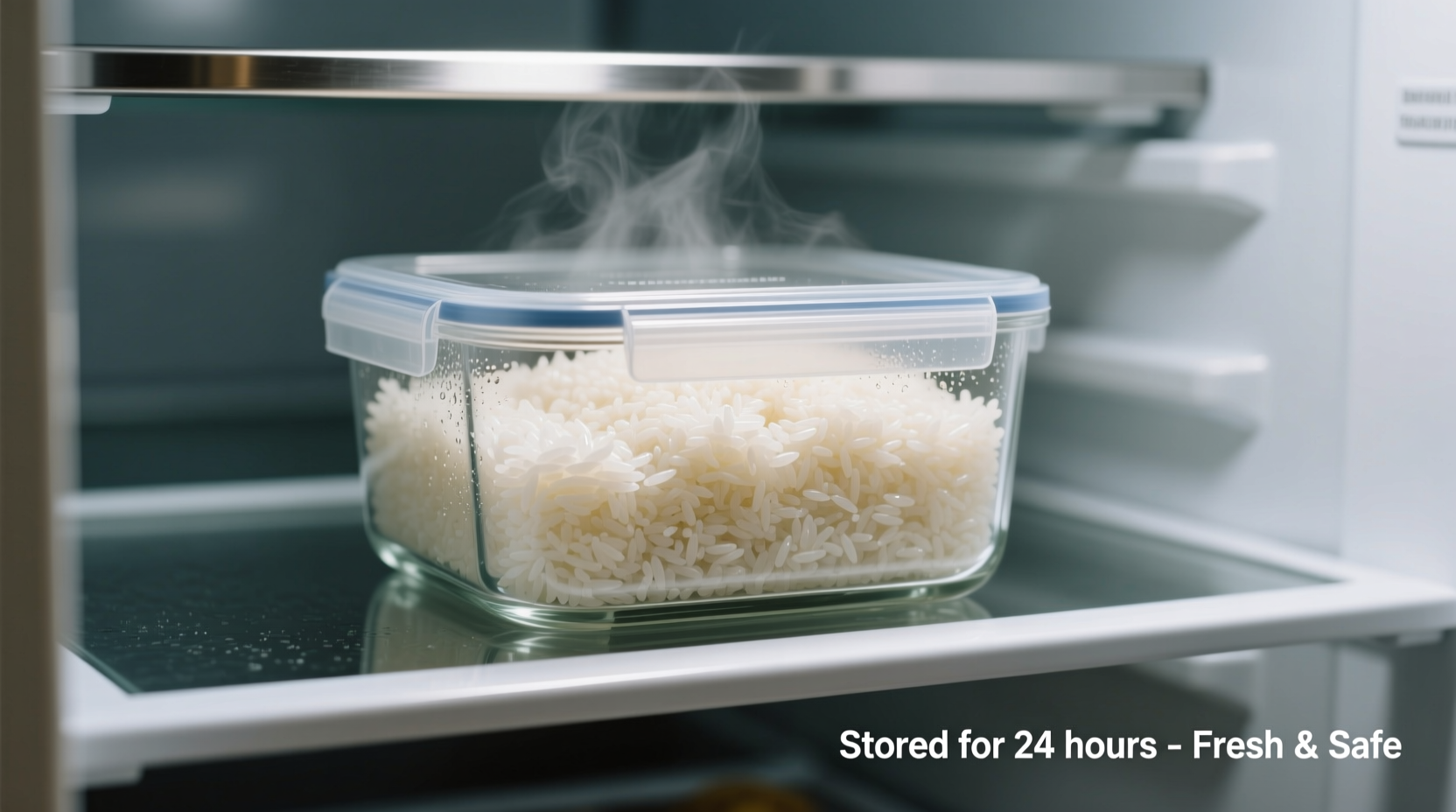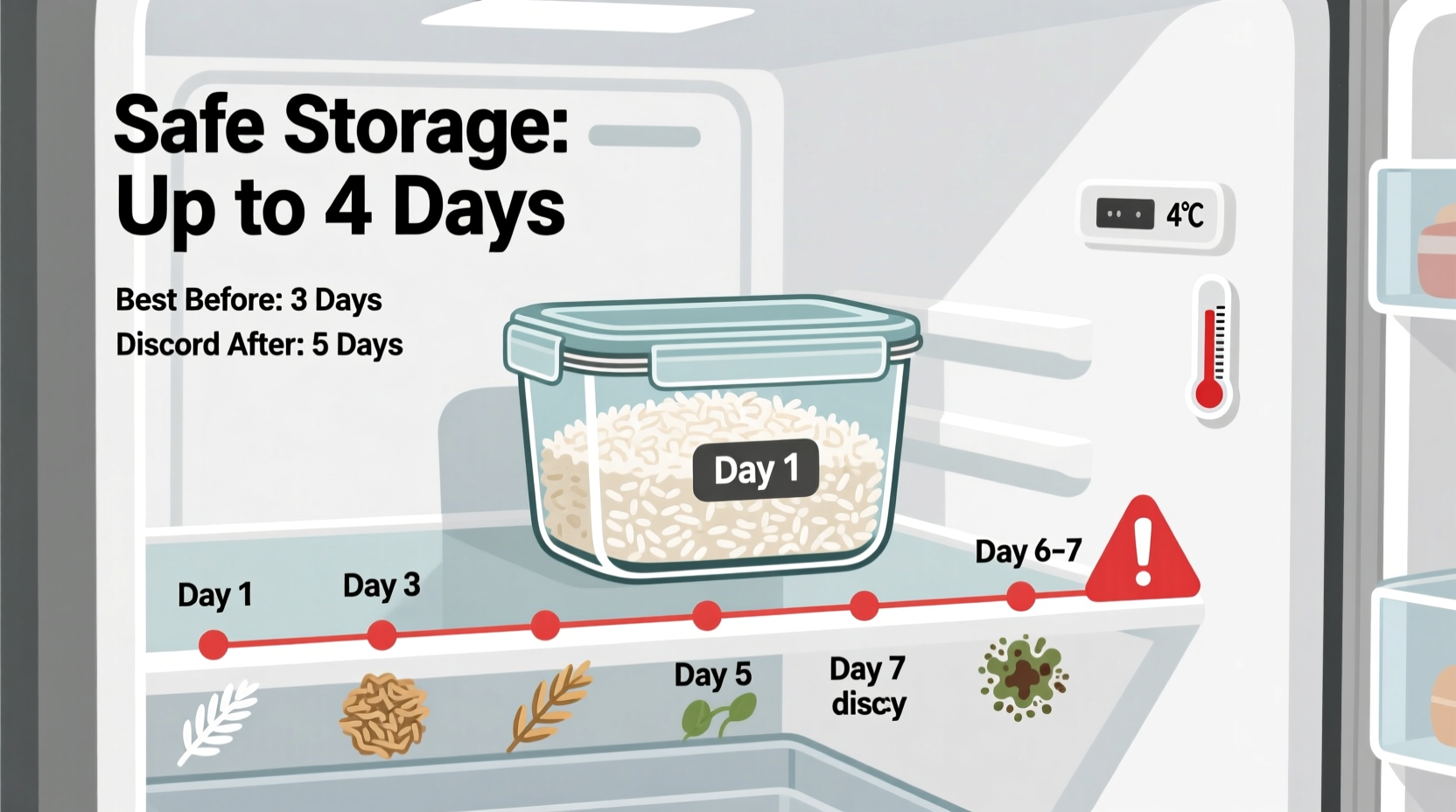The Critical First Hours: Why Rice Requires Special Attention
Unlike many cooked foods, rice presents unique food safety challenges due to Bacillus cereus, a bacteria commonly found in soil and rice fields. This resilient bacteria produces heat-resistant spores that survive cooking and can multiply rapidly at room temperature. The USDA Food Safety and Inspection Service emphasizes that cooked rice becomes potentially hazardous if left at room temperature for more than 2 hours (or 1 hour when ambient temperatures exceed 90°F/32°C).
| Rice Type | Refrigerator Storage (40°F/4°C or below) | Freezer Storage (0°F/-18°C) |
|---|---|---|
| White rice | 3-4 days | 18 months |
| Brown rice | 3-4 days | 6 months (due to higher oil content) |
| Wild rice | 3-4 days | 6 months |
| Fried rice | 3-4 days | 2-3 months |
Science Behind Rice Spoilage: The Bacillus cereus Threat
Rice's unique food safety profile stems from Bacillus cereus, which produces two types of toxins:
- Emetic toxin - Causes vomiting within 1-6 hours of consumption
- Diarrheal toxin - Causes diarrhea 6-15 hours after eating contaminated rice
According to the FDA Food Code, cooked rice falls under the category of Time/Temperature Control for Safety (TCS) foods that require strict temperature management. The bacteria multiply most rapidly between 40°F and 140°F (4°C-60°C), known as the "danger zone." Proper cooling techniques are critical - the NHS Food Standards Agency recommends dividing large quantities into shallow containers no deeper than 2 inches to facilitate rapid cooling.
Step-by-Step: Proper Rice Storage Protocol
Follow this professional kitchen-tested method to maximize safety and quality:
- Cool rapidly - Spread cooked rice in a thin layer on a clean baking sheet immediately after cooking
- Refrigerate within 2 hours - Transfer to airtight containers once steam has dissipated (should feel cool to touch)
- Label containers - Note preparation date with marker directly on container
- Store properly - Place in main refrigerator compartment (not door), maintaining consistent 35-38°F (2-3°C)
- Reheat thoroughly - Heat to internal temperature of 165°F (74°C) with added moisture to prevent drying

Warning Signs Your Rice Has Spoiled
Before consuming refrigerated rice, conduct this safety check:
- Visual inspection - Look for discoloration, mold spots, or unusual slime formation
- Smell test - Detect sour, funky, or unpleasant odors (fresh rice should have neutral aroma)
- Texture check - Notice excessive hardness or stickiness beyond normal refrigeration effects
- Taste caution - If any doubt exists, do not taste - discard immediately
The USDA Food Safety and Inspection Service reports that Bacillus cereus toxins cannot be detected by sight, smell, or taste, making strict adherence to storage timelines essential.
Special Considerations for Different Rice Types
While the 3-4 day rule applies universally, certain rice varieties require additional attention:
- Brown rice - Higher oil content makes it more susceptible to rancidity, though bacterial growth timeline remains similar
- Cooked rice dishes - Recipes containing dairy, eggs, or meat (like risotto or fried rice) may have shorter safe storage times
- Rice from restaurants - The FDA advises treating takeout rice with extra caution as you cannot verify initial cooling procedures
Safe Reheating Practices to Prevent Foodborne Illness
Proper reheating is as crucial as proper storage:
- Add 1-2 tablespoons of water per cup of rice to restore moisture
- Use microwave, stovetop, or steamer - avoid slow cookers which may not reach safe temperatures quickly enough
- Stir frequently to ensure even heating throughout
- Verify internal temperature reaches 165°F (74°C) with a food thermometer
- Consume reheated rice immediately - do not re-refrigerate
Remember that reheating does not eliminate Bacillus cereus toxins once they've formed, making proper initial storage critical.
When in Doubt, Throw It Out: The Food Safety Mantra
Food safety experts universally agree: if you're uncertain about rice storage duration or conditions, discard it. The CDC reports approximately 63,000 cases of Bacillus cereus food poisoning annually in the United States, with rice dishes being a common culprit. Following strict 3-4 day refrigeration guidelines significantly reduces your risk while maintaining food quality.











 浙公网安备
33010002000092号
浙公网安备
33010002000092号 浙B2-20120091-4
浙B2-20120091-4